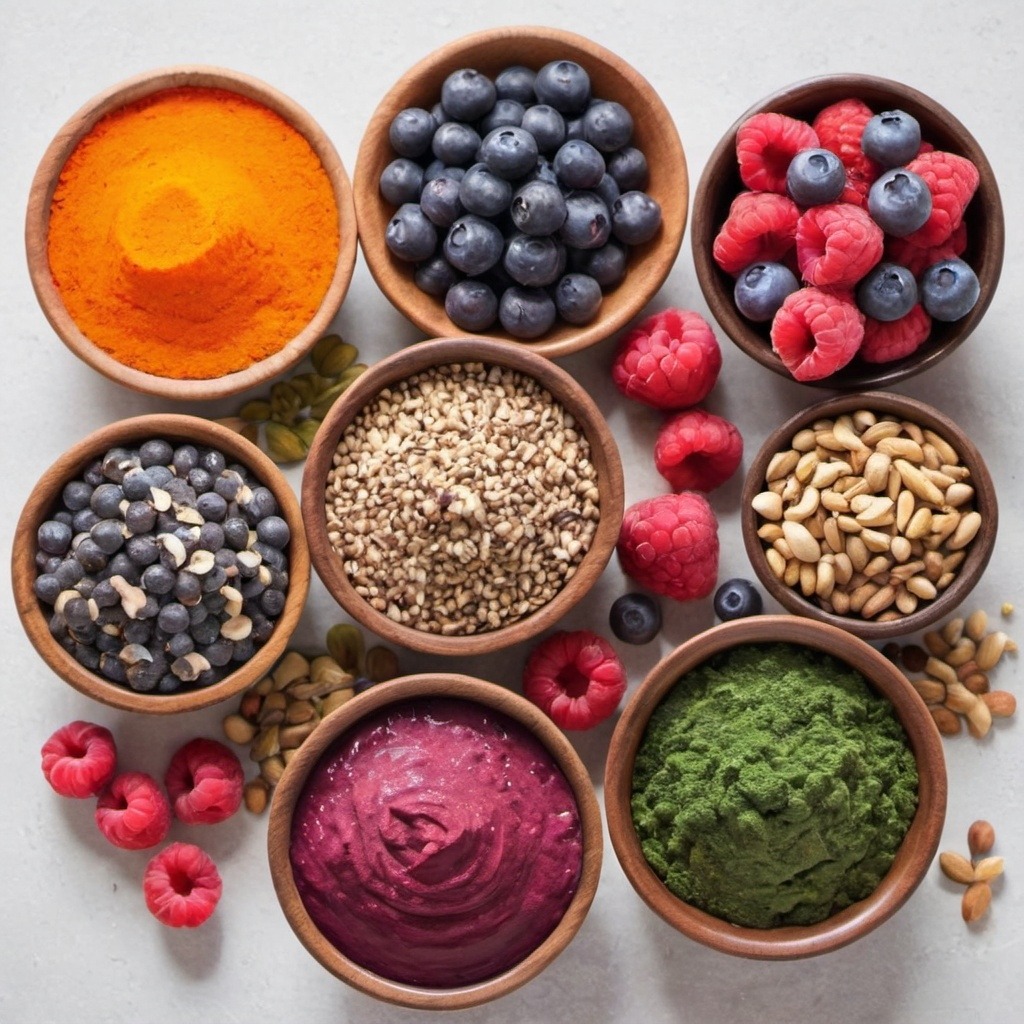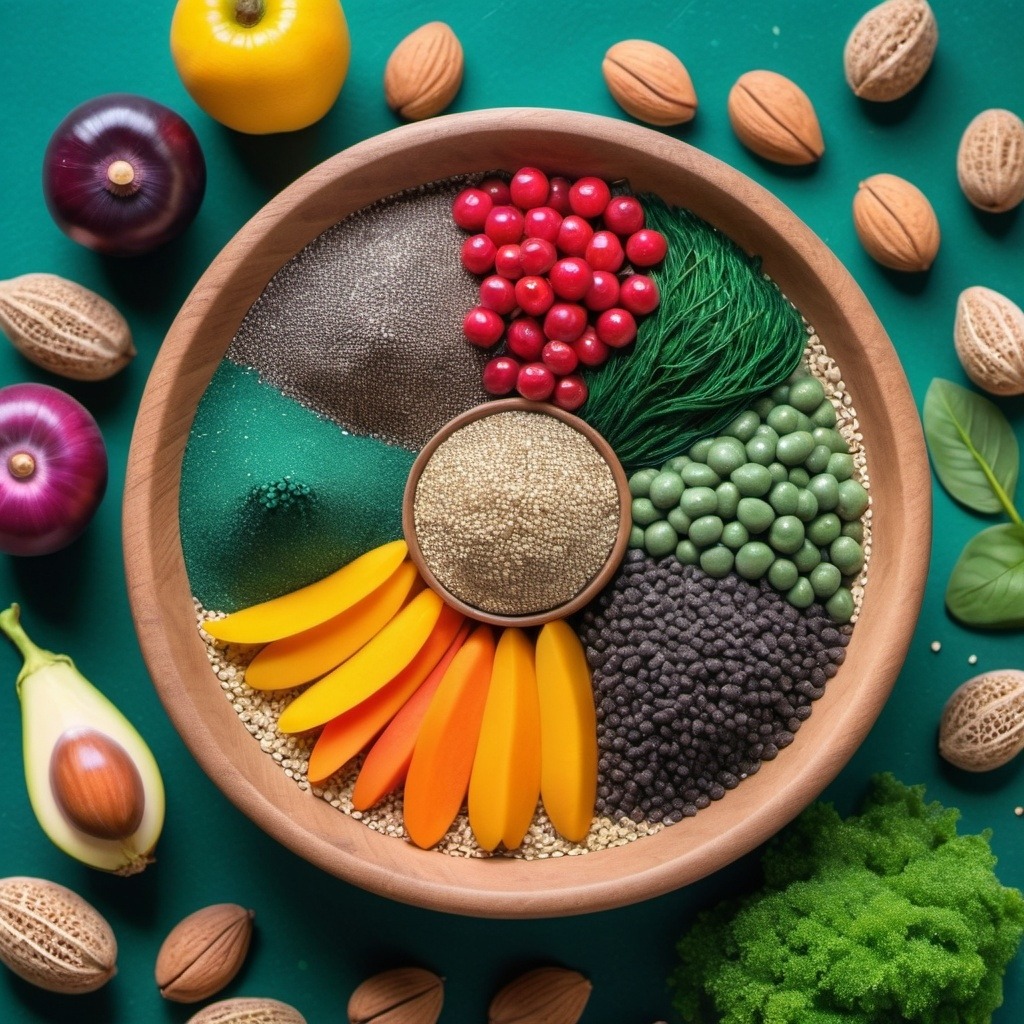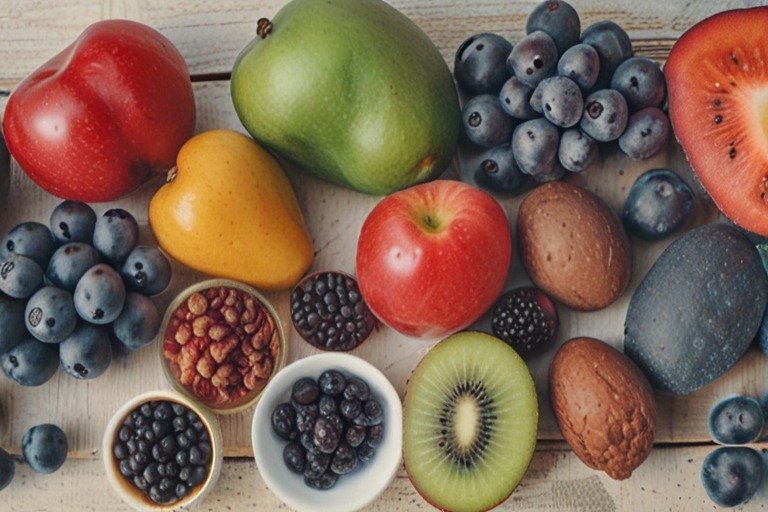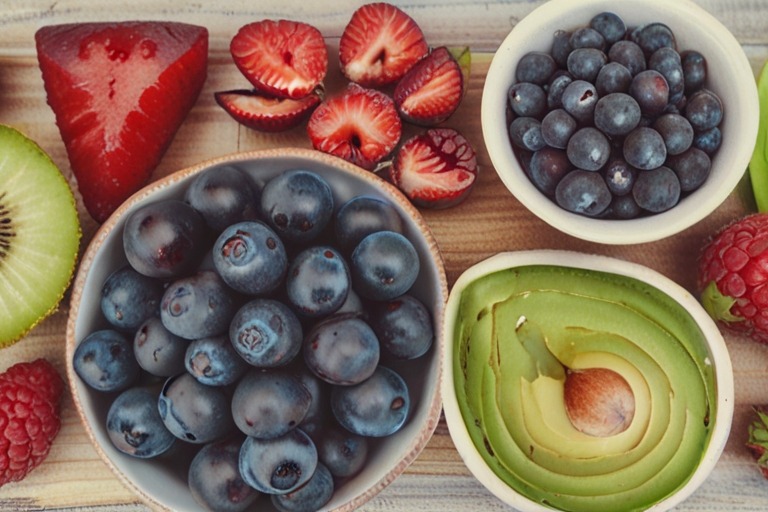
In today’s health-conscious world, the term “superfoods” has become a buzzword, captivating the interest of nutrition enthusiasts and casual eaters alike. As people seek ways to enhance their diets and improve overall wellness, superfoods have surged in popularity, offering a tantalizing promise of superior health benefits.
Superfoods are nutrient-rich foods considered to be especially beneficial for health and well-being. They are packed with vitamins, minerals, antioxidants, and other essential nutrients that support various bodily functions. From antioxidant-rich blueberries that boost brain health to omega-3-packed chia seeds that promote heart wellness, superfoods offer a natural way to fortify your diet with essential nutrients.
Incorporating superfoods into your daily meals is more than just a trend; it’s a strategic approach to achieving optimal health. These powerhouse foods can help reduce the risk of chronic diseases, enhance immune function, and improve energy levels. By adding superfoods like kale, quinoa, and turmeric to your diet, you not only diversify your nutrient intake but also embrace a proactive stance towards long-term wellness.
As you explore the world of superfoods, you’ll discover how easy and delicious it can be to integrate these nutritional powerhouses into your meals. Whether you’re looking to boost your morning smoothie with some chia seeds or add a dash of turmeric to your evening curry, superfoods offer versatile and accessible options to elevate your dietary habits and support your health journey.
What Are Superfoods?
Definition and Criteria of Superfoods
Superfoods are a unique category of nutrient-dense foods that provide a significant amount of essential vitamins, minerals, and antioxidants in every bite. While there is no official scientific definition, superfoods are generally recognized for their exceptional nutritional profile and their ability to contribute to overall health. Foods like kale, blueberries, quinoa, and chia seeds are often labeled as superfoods because they deliver a high concentration of beneficial nutrients with relatively few calories.
The Science Behind the Nutritional Benefits of Superfoods
The nutritional benefits of superfoods are supported by scientific research that highlights their potential to enhance health and prevent disease. Antioxidants found in superfoods like berries help combat oxidative stress, which can lead to chronic conditions such as heart disease and cancer. Omega-3 fatty acids, abundant in chia seeds and flaxseeds, are essential for brain health and have anti-inflammatory properties. Fiber-rich superfoods, such as quinoa and kale, promote digestive health and can help maintain healthy blood sugar levels.
For example, the high levels of vitamin C in citrus fruits and bell peppers boost the immune system, while the iron content in spinach supports healthy blood circulation. Turmeric, a popular superfood, contains curcumin, a compound with powerful anti-inflammatory and antioxidant effects. Studies have shown that regular consumption of these nutrient-packed foods can lead to improved health outcomes and enhanced overall well-being.
Common Misconceptions About Superfoods
Despite their popularity, there are several misconceptions about superfoods that need to be addressed. One common misconception is that consuming superfoods alone can compensate for an otherwise poor diet. While superfoods are incredibly nutritious, they should be part of a balanced and varied diet to achieve the best health results. Another misconception is that superfoods are exotic and expensive. In reality, many superfoods, such as spinach, sweet potatoes, and blueberries, are widely accessible and affordable.
Top Superfoods to Include in Your Diet
Quinoa: Benefits and Uses
Quinoa is often hailed as a superfood due to its impressive nutritional profile. This ancient grain is a complete protein, meaning it contains all nine essential amino acids. It’s also rich in fiber, iron, magnesium, and manganese, making it a powerhouse of nutrients. Quinoa is incredibly versatile and can be used in various dishes. It works well as a base for salads, a side dish, or even as a substitute for rice or pasta. Its nutty flavor and fluffy texture make it a favorite in both savory and sweet recipes.
Kale: Nutritional Profile and Recipes

Kale is one of the most nutrient-dense foods on the planet. It is packed with vitamins A, C, and K, along with a good amount of calcium, potassium, and iron. Kale is also rich in antioxidants, including quercetin and kaempferol, which have numerous health benefits. This leafy green can be used in a variety of dishes, from salads and smoothies to soups and stir-fries. For a simple and delicious recipe, try making kale chips by tossing the leaves with olive oil and baking them until crispy.
Blueberries: Antioxidant Properties and Health Benefits
Blueberries are celebrated for their high antioxidant content, particularly anthocyanins, which give them their vibrant color and numerous health benefits. These antioxidants help protect the body from oxidative stress and inflammation, potentially reducing the risk of chronic diseases such as heart disease and cancer. Blueberries are also a good source of vitamins C and K, as well as dietary fiber. Enjoy them fresh as a snack, add them to your morning oatmeal or yogurt, or incorporate them into baked goods for a nutritious boost.
Chia Seeds: Omega-3 Content and Versatility
Chia seeds are tiny but mighty when it comes to nutrition. They are an excellent source of omega-3 fatty acids, which are essential for brain health and have anti-inflammatory properties. Chia seeds are also rich in fiber, protein, calcium, and antioxidants. Their ability to absorb liquid makes them a great addition to smoothies, puddings, and baked goods. You can also sprinkle chia seeds on salads or cereal for a nutritious crunch. One popular use is making chia pudding by soaking the seeds in almond milk overnight, creating a healthy and satisfying breakfast.
Turmeric: Anti-Inflammatory Properties and How to Use It
Turmeric is a golden-yellow spice known for its potent anti-inflammatory and antioxidant properties, largely due to its active compound, curcumin. Regular consumption of turmeric can help reduce inflammation and may lower the risk of chronic diseases like arthritis and heart disease. Turmeric is incredibly versatile in the kitchen. It can be used in soups, stews, curries, and even smoothies. For a simple way to incorporate turmeric into your diet, try making golden milk by blending the spice with warm milk and a touch of honey.
Benefits of Superfoods
Health Benefits of Incorporating Superfoods into Your Diet
Incorporating superfoods into your diet can significantly enhance your overall health and well-being. These nutrient-dense foods provide a high concentration of vitamins, minerals, and antioxidants that support various bodily functions. By adding superfoods to your meals, you can help your body get the essential nutrients it needs to function optimally, reduce the risk of chronic diseases, and improve your quality of life.
How Superfoods Can Improve Specific Aspects of Health
Heart Health: Many superfoods are beneficial for heart health. For example, blueberries and kale are rich in antioxidants that help reduce inflammation and oxidative stress, two major contributors to heart disease. Omega-3 fatty acids found in chia seeds are known to lower triglyceride levels and reduce the risk of arrhythmias. Quinoa, being high in fiber, helps lower bad cholesterol levels, further protecting the heart.
Brain Function: Superfoods like blueberries and turmeric are particularly good for brain health. Blueberries contain anthocyanins, which have been shown to improve cognitive function and delay brain aging. Turmeric’s curcumin can cross the blood-brain barrier and has been found to increase levels of Brain-Derived Neurotrophic Factor (BDNF), which supports neuron growth and function. Regular consumption of these superfoods can help improve memory and cognitive performance.
Immune Support: A strong immune system is essential for preventing illnesses and infections. Superfoods such as kale and turmeric boost the immune system thanks to their high content of vitamins, minerals, and anti-inflammatory properties. Kale is loaded with vitamin C, which is crucial for the immune response, while turmeric’s curcumin has been shown to modulate immune cells and enhance the body’s ability to fight off pathogens.
Scientific Studies Supporting the Benefits of Superfoods

Numerous scientific studies have documented the health benefits of superfoods, providing strong evidence for their positive impact on health. For instance, a study published in the Journal of Agricultural and Food Chemistry highlighted the potent antioxidant activity of blueberries, linking their consumption to reduced risk of cardiovascular diseases and improved brain health . Another study in the American Journal of Clinical Nutrition found that the high fiber content in quinoa can help lower cholesterol and improve digestive health .
Research on turmeric, particularly its active compound curcumin, has shown its effectiveness in reducing inflammation and oxidative damage. A review in the Journal of Alternative and Complementary Medicine summarized various studies demonstrating curcumin’s potential in treating conditions such as arthritis, metabolic syndrome, and anxiety disorders . Additionally, chia seeds’ omega-3 fatty acids have been widely studied, with research published in Nutrients indicating their benefits for cardiovascular health and their role in reducing inflammation .
How to Incorporate Superfoods into Your Diet
Practical Tips for Adding Superfoods to Everyday Meals
Incorporating superfoods into your daily meals can be both easy and enjoyable. Start by identifying the superfoods that you like and find simple ways to add them to your existing recipes. For example, sprinkle chia seeds on your morning cereal or yogurt, add a handful of kale to your lunchtime salad, or blend blueberries into your afternoon smoothie. Quinoa can be used as a base for a variety of dishes, from hearty salads to protein-packed bowls.
Another practical tip is to batch-cook meals that incorporate superfoods. Preparing large quantities of quinoa, beans, or kale-based dishes in advance can save time and ensure you always have nutritious options available. Beans, for instance, are an excellent source of fiber and protein, and they can be easily added to soups, stews, and salads to enhance nutritional value and help manage blood pressure.
Easy and Delicious Superfood Recipes
Quinoa and Kale Salad: Combine cooked quinoa with fresh kale, cherry tomatoes, avocado, and a squeeze of lemon juice. Add a sprinkle of chia seeds for an extra nutritional boost. This salad is not only delicious but also rich in vitamins, minerals, and antioxidants.
Blueberry Chia Pudding: Mix chia seeds with almond milk and a touch of honey. Let it sit overnight in the refrigerator. In the morning, top with fresh blueberries and a handful of nuts. This pudding is a great way to start your day with a dose of omega-3 fatty acids and antioxidants.
Turmeric Lentil Soup: Cook lentils with diced carrots, celery, and onions. Add turmeric, cumin, and garlic for flavor. This hearty soup is packed with anti-inflammatory compounds and can help lower the risk of heart disease.
Kale and White Bean Stew: Sauté garlic and onions in olive oil, then add chopped kale and canned white beans. Simmer with vegetable broth and season with rosemary and thyme. Beans are an excellent addition to this stew, offering fiber and protein that can help maintain healthy blood pressure levels.
How to Create Balanced Meals with Superfoods
Creating balanced meals with superfoods involves combining them with other nutrient-rich ingredients to ensure you get a well-rounded intake of essential nutrients. For instance, pair quinoa with beans and vegetables to create a complete protein source, rich in fiber and essential vitamins. This combination can help manage blood pressure and reduce the risk of heart disease.
When planning meals, aim to include a variety of superfoods to maximize their health benefits. For example, a dinner plate could feature baked salmon (another superfood rich in omega-3 fatty acids), a side of quinoa, and a kale salad. This not only ensures a balanced intake of proteins, healthy fats, and carbohydrates but also packs your meal with compounds that support overall health.
Where to Buy the Best Superfoods
Recommendations for Purchasing High-Quality Superfoods
When it comes to purchasing high-quality superfoods, it’s essential to choose reputable sources that guarantee freshness and authenticity. Look for stores and online platforms that specialize in organic and natural products. These vendors are more likely to offer superfoods that are free from pesticides, GMOs, and other harmful additives. It’s also beneficial to buy superfoods from brands that emphasize sustainability and ethical sourcing practices.
Online and Local Stores Known for Their Superfood Selections
Online Stores:
- Amazon: Amazon offers a vast selection of superfoods, including well-known brands like Navitas Organics and Terrasoul Superfoods. The convenience of home delivery and the availability of customer reviews make it easy to find high-quality products.
- Thrive Market: This membership-based online store specializes in organic and non-GMO products, including a wide range of superfoods. Thrive Market often provides discounts on bulk purchases, making it a cost-effective option for stocking up on your favorite superfoods.
- Vitacost: Vitacost is another excellent online retailer that offers a variety of superfoods at competitive prices. They often run promotions and discounts, which can help you save money while maintaining a healthy diet.
Local Stores:
- Whole Foods Market: Known for its commitment to organic and natural products, Whole Foods Market is a great place to find fresh and high-quality superfoods. Their knowledgeable staff can also provide guidance on selecting the best products.
- Trader Joe’s: Trader Joe’s offers a curated selection of superfoods at affordable prices. They often have unique and seasonal items, making it a fun place to discover new superfoods.
- Local Farmers’ Markets: Shopping at local farmers’ markets allows you to buy directly from producers, ensuring the freshness and quality of your superfoods. It’s also an excellent way to support local farmers and sustainable agriculture.
Tips for Selecting Fresh and Organic Superfoods
When selecting superfoods, whether online or in-store, keep the following tips in mind to ensure you get the best quality:
- Check for Certifications: Look for organic certification labels, such as USDA Organic or Non-GMO Project Verified, to ensure that the superfoods are free from harmful chemicals and genetically modified organisms.
- Read Reviews and Ratings: If you’re buying online, take the time to read customer reviews and check ratings. This can provide insight into the quality and freshness of the products.
- Inspect Fresh Produce: When buying fresh superfoods like kale, blueberries, or turmeric, inspect the produce for signs of freshness. Look for vibrant colors, firm textures, and a lack of blemishes or mold.
- Prefer Bulk Buying: For items like quinoa, chia seeds, and other dried superfoods, buying in bulk can often save money and reduce packaging waste. Ensure that bulk items are stored in airtight containers to maintain freshness.
- Ask Questions: Don’t hesitate to ask store employees or market vendors about the sourcing and quality of their products. Knowledgeable staff can provide valuable information to help you make informed choices.
